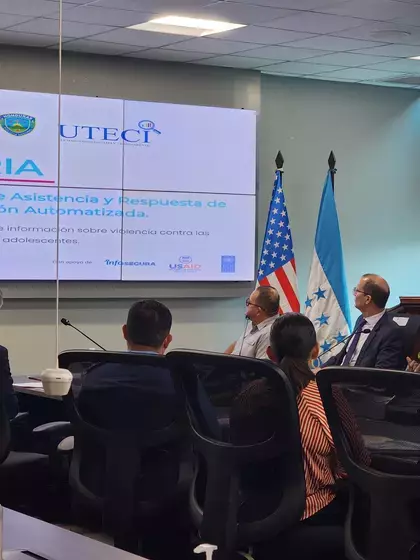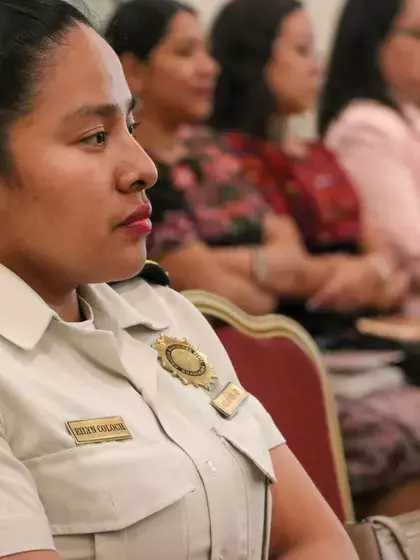Disappeared persons have a first and last name

Every August 30 commemorates the International Day of the Victims of Enforced Disappearances. This is an opportunity to demand that victims not be forgotten, to promote the right to learn the truth and to take measures to ensure this crime does not remain unpunished.
On such a memorable occasion, InfoSegura wants to go behind the figures and data, unveiling the human face of the thousands who are still missing, sharing some of their stories. This is hour homage.
Betzabé Lopez and Veronica Yamileth Larios
On September first, 2016 in the municipality of Amatitlan Guatemala,
the bodies of two women who had been previously reported missing were found. Betzabe Lopez, a 15-year-old teenager and Veronica Yamileth Larios, a young 25-year-old woman. No suspect has ever been identified.
According to data by the InfoSegura Regional Project, an initiative of the United Nations Development Programme (UNDP) in Latin America and the Caribbean in collaboration with the United States Agency for International Development (USAID), 37,526 people were reported missing between 2009 and 2022. 22,127 of them were girls from 13 to 17 years of age.
Carlos Emilio Reynosa
He was 44 years old, had spent half of his life driving taxi cabs in San Salvador, the capital city of El Salvador. Carlos Emilio Reynosa went to work every day uncertain of what might happen to him, but he had to earn a living for his family. The fateful day was November 18, 2018, when Carlos Emilio never returned home, and was never heard from again. Almost five years later, his family is still looking for him.
In El Salvador, disappearances increased 28.2 per cent in the first quarter of 2023 with regard to the first quarter of the previous year (132 people were reported missing by the National Civil Police), according to analysis of homicidal violence in El Salvador from January to March 2023, prepared by InfoSegura, based on official data.
Daisy Acosta
Daisy Azucena Acosta disappeared on Friday June 23, 2023 in Planeta neighbourhood in San Pedro Sula, Honduras when she was walking to work. Her relatives reported the situation to the police. The following day, neighbours in San Francisco neighbourhood reported an unknown car in a no parking zone. When the authorities arrived, there was a dead body inside the vehicle. It was Daisy Acosta.
Analysis of the state of the violence and citizen security from January to December 2022 by the Secretariat of Social Development of Honduras prepared with support by InfoSegura shows that in 2022 alone, there were 940 reports of disappearances. In the last decade, this adds up to 9,838 people.
Alba España and Keneth López
Alba Mishel España was eight years old and lived in Camotán, Guatemala. She disappeared on June 14, 2007, the day before her ninth birthday. Her body was found a short time later with signs of violence. Two women who abducted the girl with the intention of selling her were tried and convicted.
Keneth Alexis Lopez was four years old when he disappeared on December 16, 2009. He lived in Jalapa, also in Guatemala. A few days later, his body was found buried in the garden of a neighbourhood house. Another two women were convicted of kidnapping Keneth for the purpose of trafficking.
Following the two cases, there was pressure from society and organizations such as UNICEF and Fundación Sobrevivientes leading to a change in the action protocol in cases of disappearance.
Previously, there had been a 24- and 48-hour waiting period after a person went missing before the search protocol went into effect, a crucial period in the recovery of a missing child. Since that time, the AlbaKeneth alert goes into effect as soon as a report is filed, mobilizing different national institutions, including the National Civil Police, Public Ministry, Office of the Public Defender General of the Nation, as well as emergency services, the mass media and others that can help in the search.
Heriberto Antonio González Larios
In 2010, the son of María Elena Larios, young Heriberto Antonio González, left his home in El Salvador for a better life in the northern hemisphere. He told his mother he wanted to go, although she did not approve of his plans. María Elena told him it was not a good idea, that it was a very dangerous journey. They said goodbye in front of the house, and she has never seen him since.
Over a decade later, María Elena is still looking for him, she refuses to give up hope that he may still be alive. She still talks about Heriberto in present tense.
Family and friends of disappeared people abide the slow mental anguish of uncertainty, wondering whether the victim is still alive, and if so, where they may be held, under what conditions and the state of their health. They are also aware that their own lives are in jeopardy, they know they could meet the same end, and that simply looking into the truth of the matter can expose them to even greater risk.
María Isabel and Claudina
María Isabel was 15 years old when she went missing. On a December morning in 2001, she left home for work and two days later her body was found showing signs that she had been tortured and raped. When her mother reported her missing, none of the authorities paid any mind.
Claudina Velásquez, a 19-year-old law student, left a party on an August night in 2015, and never got home. Her remains were found a few kilometres away, also bearing the marks of violence. When the disappearance was reported, the police played it down, and tried to reassure the relatives that their daughter was probably getting over a hangover with friends. These are two young women in a long list, but their names were given to the Isabel-Claudina Alert an instant search mechanism created in 2016 by the Government of Guatemala.
Guatemala, Peru, El Salvador, Argentina, Colombia, Chile along with Iraq, Sri Lanka, Argelia and Pakistan, are the countries with the highest figures in forced disappearance in the last 40 years.
According to the Declaration on the Protection of All Persons from Enforced Disappearance, adopted by the UN General Assembly in 1993, enforced disappearances occur whenever "persons are arrested, detained or transferred against their will, or otherwise deprived of their liberty by government agents of any sector or level, by organized groups or private individuals acting on behalf of, or with the direct or indirect support, authorization or acquiescence of the Government, and who then refuse to disclose the fate or whereabouts of such persons or to acknowledge that they are deprived of their liberty, thereby removing them from the protection of the law."
Note: All cases presented here are real and have been compiled from different mass media, NGOs and international agencies.





